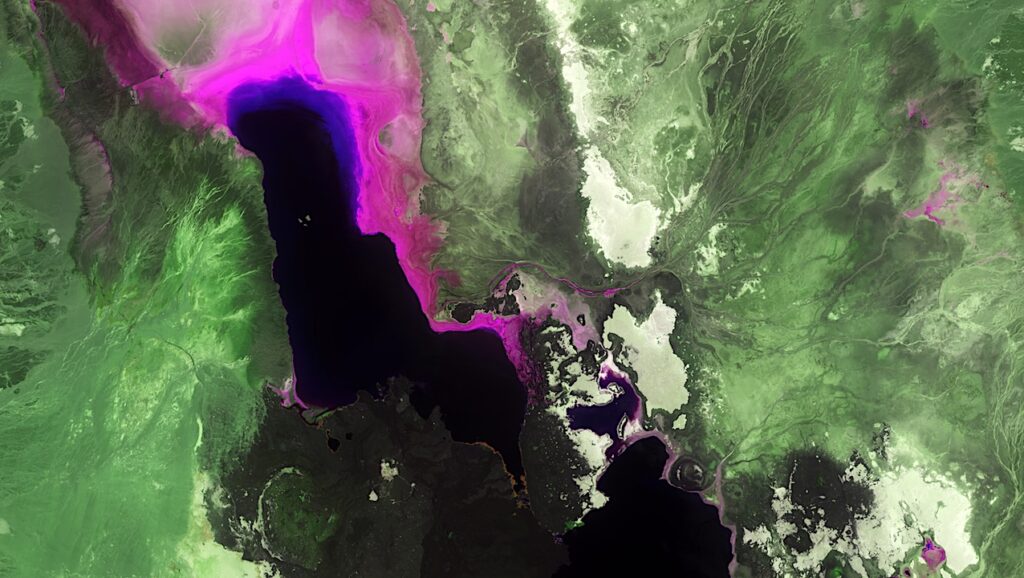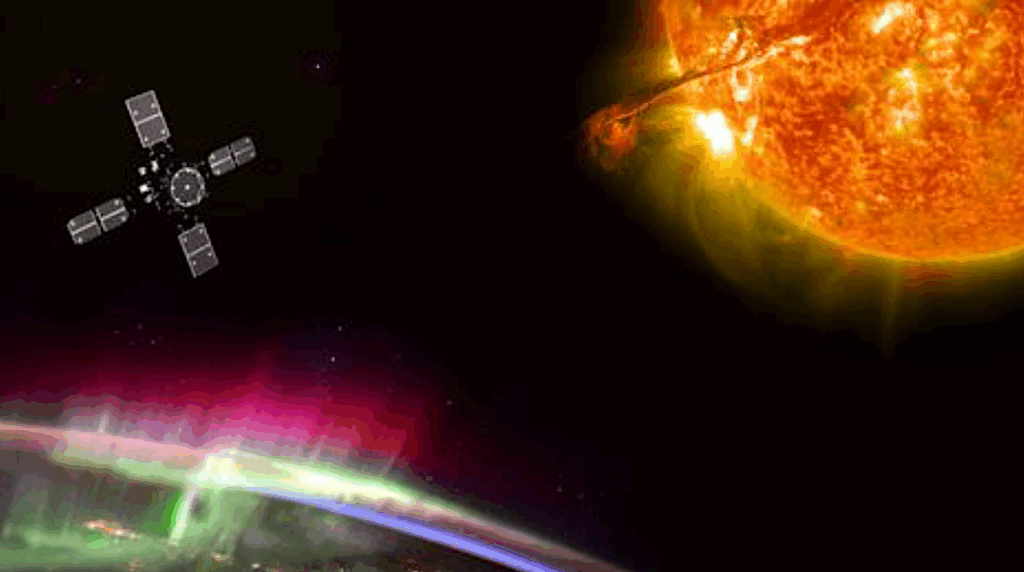Runaway Greenhouse Radius Inflation Effect

Planets similar to Earth – but slightly more irradiated – are expected to enter into a runaway greenhouse state, where all surface water rapidly evaporates, forming an optically thick H2O-dominated atmosphere.
For Earth, this extreme climate transition is thought to occur for a ~6% increase only of the solar luminosity, though the exact limit at which the transition would occur is still a highly debated topic. In general, the runaway greenhouse is believed to be a fundamental process in the evolution of Earth-size, temperate planets. Using 1-D radiative-convective climate calculations accounting for thick, hot water vapour-dominated atmospheres, we evaluate the transit atmospheric thickness of a post-runaway greenhouse atmosphere, and find that it could possibly reach over a thousand kilometers (i.e., a few tens of % of Earth radius).
This abrupt radius inflation – resulting from the runaway-greenhouse-induced transition – could be detected statistically by ongoing and upcoming space missions such as TESS, CHEOPS and PLATO (combined with precise radial velocity mass measurements with ground-based spectrographs such as ESPRESSO, CARMENES or SPIRou), or even in particular cases in multiplanetary systems such as TRAPPIST-1 (when masses and radii will be known with good enough precision).
This result provides the community with an observational test of (1) the concept of runaway greenhouse, that defines the inner edge of the traditional Habitable Zone, and the exact limit of the runaway greenhouse transition. In particular, this could provide an empirical measurement of the irradiation at which Earth analogs transition from a temperate to a runaway greenhouse climate state. This astronomical measurement would make it possible to statistically estimate how close Earth is from the runaway greenhouse. (2) the presence (and statistical abundance) of water in temperate, Earth-size exoplanets.
Runaway Greenhouse Radius Inflation Effect – An observational diagnostic to probe water on Earth-size planets and test the Habitable Zone concept
Martin Turbet, David Ehrenreich, Christophe Lovis, Emeline Bolmont, Thomas Fauchez
(Submitted on 8 Jun 2019)
Comments: accepted for publication in Astronomy and Astrophysics
Subjects: Earth and Planetary Astrophysics (astro-ph.EP)
Cite as: arXiv:1906.03527 [astro-ph.EP] (or arXiv:1906.03527v1 [astro-ph.EP] for this version)
Submission history
From: Martin Turbet
[v1] Sat, 8 Jun 2019 21:47:54 UTC (1,204 KB)
https://arxiv.org/abs/1906.03527
Astrobiology








